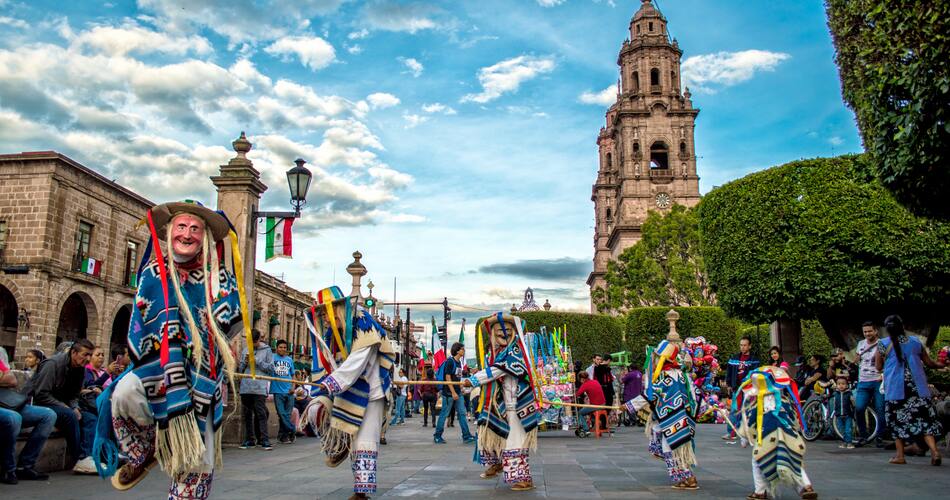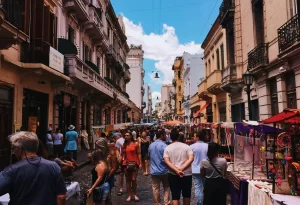Heritage tours and festivals are again drawing big crowds, but operators must adjust to a different world post-2020
As the negative effects of the pandemic fade further into the distance of life’s rearview mirror, each day brings a newer sense of normalcy.
The tourism market, as an example, sees stronger numbers with each passing month as travelers continue to return to the roads and skies in droves.
Two markets in particular: History and heritage tours and festivals, are seeing attendance significantly growing after being essentially shuttered in 2020. Still, while operators are basking in the glow of increased business, they are facing challenges that didn’t necessarily exist prior to 2020.
History and heritage tours are big business
According to the latest findings of Future Market Insights, a provider of market intelligence, the global heritage tourism market revenue is expected to reach around $657 billion by the end of 2023. This is a considerable uptick from the conclusion of 2021 when the market size was valued at $557 billion. The long-term outlook says the heritage tourism market is estimated to grow to around $1.3 trillion by 2033.
“We are so busy because people really want to travel again,” said Michelle Pino, founder and owner of Northeast Unlimited Tours. “We went 15 months with no business. We were lucky enough to start June of 2021 and it’s been nonstop ever since.
“In terms specific to COVID and the industry as a whole, the suppliers have really upped their level of cleanliness,” Pino added. “We are finding hotels taking on a new approach and attention to cleanliness than perhaps before. In terms of COVID, I’m finding the traveler isn’t as hypersensitive toward the virus itself. Everyone now just wants so badly to travel and to get out there that we’re busier than we’ve ever been.”
Historical or heritage tourism is important to the tourism industry because travelers often merge their appreciation of historical sites with other tourism staples like shopping, restaurants, attractions and resort stays. Destinations that claim a rich heritage tend to draw considerable tourism dollars.
“Among our customers, historically significant sites and tours are typically given a higher priority than more modern tours,” said Mitchell Jensen of Travel with Friends. “Given that our customers are mostly interested in bringing color to what they have read or heard, on-site experiences with historically significant places are a big selling point. Many of our customers are excited to see places like Beit She’an, The Old City of Jerusalem and the Temple Mount as well as Petra in Jordan, and the Great Pyramids in Egypt.”

Pasadena, California is home to the fabled Rose Bowl stadium and the annual Tournament of Roses parade. Photo by Fred Thomas
Operators are Overcoming obstacles
While increased tourism is, of course, superb news, the industry’s infrastructure hasn’t been able to fully keep up with the renewed demand. Worker shortages and supply-chain struggles have been widely reported and operators are finding staffing shortages are hindering the number of days their tours can visit certain stops. Operators are coping with these obstacles by adding flexibility and individual choice within their itineraries.
“The challenges we are facing are with our vendors. Asking our travelers to be flexible,” Pino added. “Moving into 2023, we are still seeing restaurant staff shortages and some attractions we deal with are still choosing to close down a couple of days per week when they used to be open seven days a week. I think the staff shortages are across the board and it’s a ripple effect. Even hotels are still having staff shortages. As far as we are with tour operators, we expect hotel rooms to freshen up a room each day, but some hotels still can’t provide that. As a result, we need to make changes to our itineraries.”
“The biggest problem now is getting an answer from vendors,” said Suzanne Slavitter owner of Sports Empire Inc. “Getting a hotel to return the call. They are just too busy. It used to be much easier to get an answer. That’s probably the biggest change since COVID is service. You are paying more money for less service.”

Festivals across the planet are returning to pre-pandemic levels. Photo by Genaro Servin
Festivals rebound but challenges remain
On the festival front, music festivals have returned to pre-pandemic levels, proving to be a considerable boost for destinations relying on those events to stimulate their tourism recovery.
Meanwhile, events like the annual Rose Parade in Pasadena, California are also seeing optimistic figures. This year’s parade was themed “Turning the Corner,” and that appears to be the case as reports say this year’s parade featured significantly larger crowds than last year’s event. The parade presented 39 floats and 21 marching bands, which was essentially equal to the 2020 parade which took place before the pandemic swung into high gear. The 2021 parade was canceled because of the pandemic.
Still, problems persist when booking tours that lead to festivals and sporting events. Aside from the aforementioned staff shortages, the significant increase in prices have been difficult for operators and travelers to cope with. While some clients aren’t concerned with rising prices, operators say the higher prices have led some travelers to delay or scale down their travel.
“Some festivals are limiting capacities and some are running on reduced hours,” said Jim Warren, director of business development, USA, of Anderson Vacations. “This may be more a result of challenges getting enough people to work rather than direct COVID-related issues.
“One of the biggest new challenges is trying to predict what health related conditions will exist when the event actually occurs,” Warren said. “Will we need to wear masks? Will capacities be restricted? Will there be restrictions on food and other refreshments?”
As operators navigate these challenging waters, they can take solace in the fact that, barring another pandemic, the festival market will continue to grow.
The most recent data presented by Festicket and Event Genius, companies that joined forces in 2019 and worked with hundreds of festivals, revealed the post-pandemic recovery for the live events industry has been booming. The company said fans are spending almost three times more on event tickets than they were pre-pandemic.
Along those lines, the Annual ICE Report estimates event-related costs will increase by 83 percent in 2023. This is a bad news, good news scenario in that it is partially based on inflation but is also a sign of returned confidence in event planning.
Crowds have returned. Normalcy grows ever closer.
Discover more stories about group travel by downloading the current issue of Leisure Group Travel today and get even more travel ideas by Subscribing for FREE
By Jason Paha







